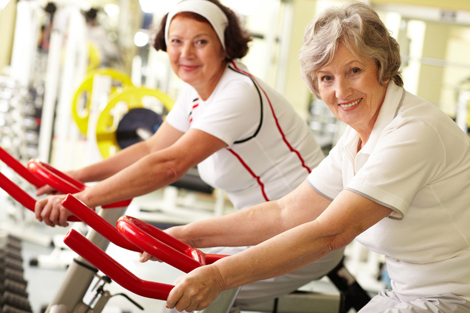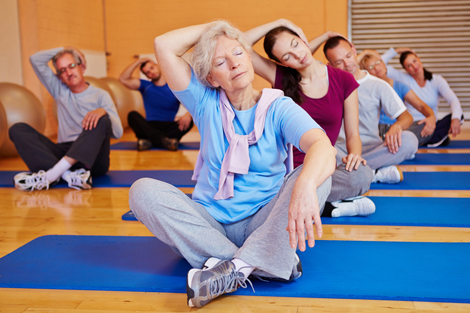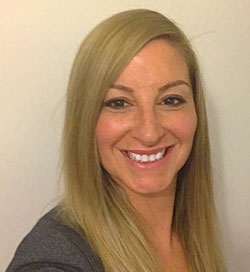For the past 66 years, corporations around the world have profited from the baby boomer market. And as baby boomers swell the ranks of the 810 million people aged 60 and over, their economic impact continues to be felt. According to UNFPA and HelpAge International, 30 years ago there were no ‘aged economies’ in which consumption by older people surpassed that of youth. In 2010, there were 23 aged economies, and by 2040 there will be 89.
An example of this can be found in the US, where the older market represents more than US$2.3tn in spending power (Age Wave). It’s 47 times richer than its younger counterpart (Pew Research Center), controls roughly 50 per cent of all discretionary income (Deloitte), and dominates 1,023 out of 1,083 categories in the consumer packaged goods industry alone (Nielsenwire).
On paper there’s no reason to neglect this sector, and yet the health and fitness industry consistently does so. So how can gyms do more for this lucrative, loyal audience? To address this question, the International Council on Active Aging (ICAA) has created Nine Principles of Active Ageing to guide operators.
1 Populations
The older population is extremely diverse – whether in terms of ability, age, income, culture, sexual orientation. The first step is to identify exactly who you want as members. Will it be highly functioning adults aged 55–70, with a high level of disposable income, for example? No matter how you answer this question, your answer to the next question is crucial to your success: how will you meet the expectations, wants, needs, dreams and desires of such different individuals? The answer to this is knowledge. Become a student of the older consumer and success is there for the taking.
2 Perceptions
Ageism and negative stereotypes of ageing will impede your success. To maximise the opportunity, you – and your staff – must embrace it and all it means to your business. The realities of ageing today are very different from the past, so leave old ways of thinking behind. Older adults are often invisible in society. Help them feel valued and you will be seen as a business with their best interests at heart.
This is a unique position that will bode well for your bottom line. An example: according to a 2002 study on behalf of Help the Aged, only 5 per cent of all advertising spend in the UK is targeted at the 35-plus market. How can you position your organisation’s marketing so older adults see themselves as a consumer of your services? The answer lies within two words: ‘ageless’ and ‘inclusive’. By becoming ageless and inclusive, you’re saying you see the older consumer – and they will now see you.
3 People
Now that you have decided on who you will serve and how to become an advocate for them, the next question relates to your workforce: with fewer people entering the labour force, and the field of ageing in particular, where will the people come from to meet the market’s demands and needs? This is a challenge for all industries, not just health and fitness.
Start by looking at the requirements in WHO’s International Guidelines for Preparing Physical Activity Instructors for Older Adults. How do your staff stack up? Are they qualified to train older members? If not, seek out universities, colleges or certification providers that offer specialist training and work with these groups – alongside the WHO Guidelines – to create an in-house training programme for future instructors. Seek out student interns to help build a solid base of potential instructors. You need to have the right people working in your club.
4 Potential
With population ageing, consumers aged 50-plus will dominate purchasing decisions for decades to come. So how can businesses tap into this opportunity? Think of one word: wellness. By implementing the seven dimensions of wellness at your fitness centre (physical, emotional, spiritual, environmental, intellectual, social and vocational) you will not only have a diverse set of programmes and services to offer, but will also have the services that match with the diversity of your potential audience. Think club, not fitness club.
5 Products
Many clubs today continue to focus their products and services towards youth. Research from the United Nations suggests this lack of interest in the older consumer stems from ageism and a limited understanding of the market.
Ask yourself this: can your current and potential older members navigate through your club with ease, or are there dumbbells, bars, benches and other items that are hazards? Are your products and services inclusive for the older consumer – from your fitness equipment to your lighting, from your pool to the programmes you offer?
Think function, think inclusive, and think about how what you offer impacts all five senses: vision, hearing, touch, smell, and taste. It’s an obvious point to make, but having the right products for the right audience is key to success.
6 Promotions
We mentioned earlier that a great majority of marketers have neglected older consumers, despite their purchasing power. Effective promotions and marketing must be rooted in the reality of life for older adults; many of today’s older people will simply not recognise themselves in the somewhat negative stereotypes of older people used in many marketing campaigns, and will be turned off by the messages that ostensibly target them.
Shifting the marketing model will not only meet consumer demand, but will also inspire societal change. We need to be real, ageless and inclusive in our messaging. We should tell a story – the past is filled with great memories, so don’t be afraid of nostalgia. Talk about what people will be able to achieve now, not in the future: more energy, better sleep, greater strength and balance that will enable them to do the things they wish, now. And use real older models, not beauty queens, in your marketing.
7 Places
Environments can encourage or discourage people of all ages when it comes to leading active, engaged lives. From indoors to outdoors, what environments will you need to engage the older member? Hire a group of older adults to visit your club and your competitors’ clubs, and have them jot down on a piece of paper what they liked and didn’t like. Put all the recommendations on a large board for your staff to see, then start the process of improvement, whether that’s changing signs, lighting or the way your club’s laid out. Don’t stop until the list is completed. Then ask the group to walk through your club again. How is their reaction now?
8 Policies
Ask the group that reviewed your club to share their thoughts on your policies too: do they support inclusiveness, or do any of them create barriers to entry? Are any unacceptable? You may find things such as refund policies don’t work for this group, or that they want a longer trial period. You may also find that your policies on club hours, accessibility, music and how your staff interact with members need adjustments to better accommodate this group.
Whatever policies you create, ensure they are posted for all to see and that they are legible – in a sufficiently large print – and understandable, in language that can be understood by someone other than a lawyer.
9 Programmes
As promoted by ICAA, the seven dimensions of wellness are the backbone of active ageing. They are also key to providing the breadth of programmes and environments that fulfill the needs and interests of the 50-plus population.
When looking at what you offer this diverse group, think functional ability, not age. An example of this is chair aerobics. One of the main reasons to offer chair aerobics is the simple fact that 42 per cent of adults aged 60–69 years, 52 per cent of individuals aged 70–79 and 66 per cent of those aged 80–89 have some difficulty stooping, crouching or kneeling. You could also consider buying stairclimbers or providing step aerobics classes, as 18 per cent of adults aged 60–69, 26 per cent of people aged 70–79 and 41 per cent of those aged 80–89 have difficulty climbing 10 stairs without a rest.
Or you could offer 30-minute classes, as 21 per cent of adults aged 60–69 years, 30 per cent of individuals aged 70–79 and 49 per cent of those aged 80–89 have difficulty walking a quarter of a mile.
Creating programmes for older adults is about enabling the user to find what they ‘can do’. By doing so, you will create services that are used by all generations.
Call to action
So when should you begin your efforts to better cater for older people? Ask yourself three questions: What’s the cost of taking action? What’s the cost of inaction? And what’s the cost of reaction, addressing these needs with wholesale changes further down the path? The time is now.

























































